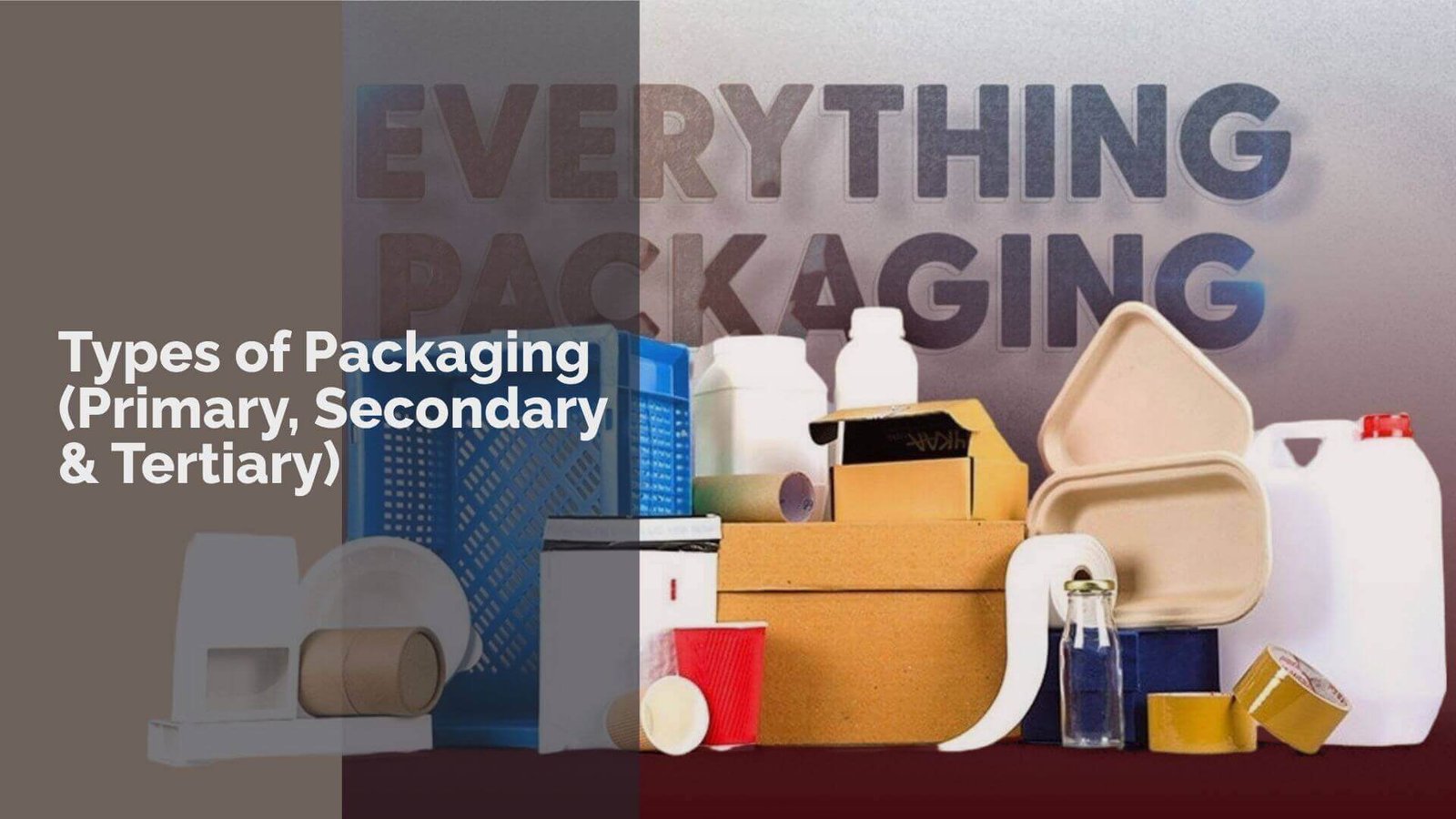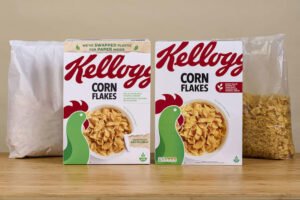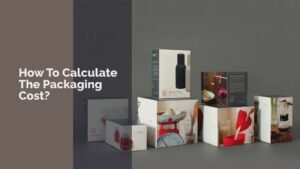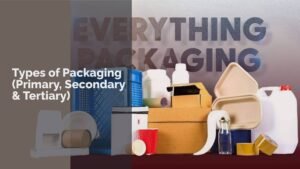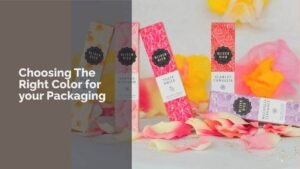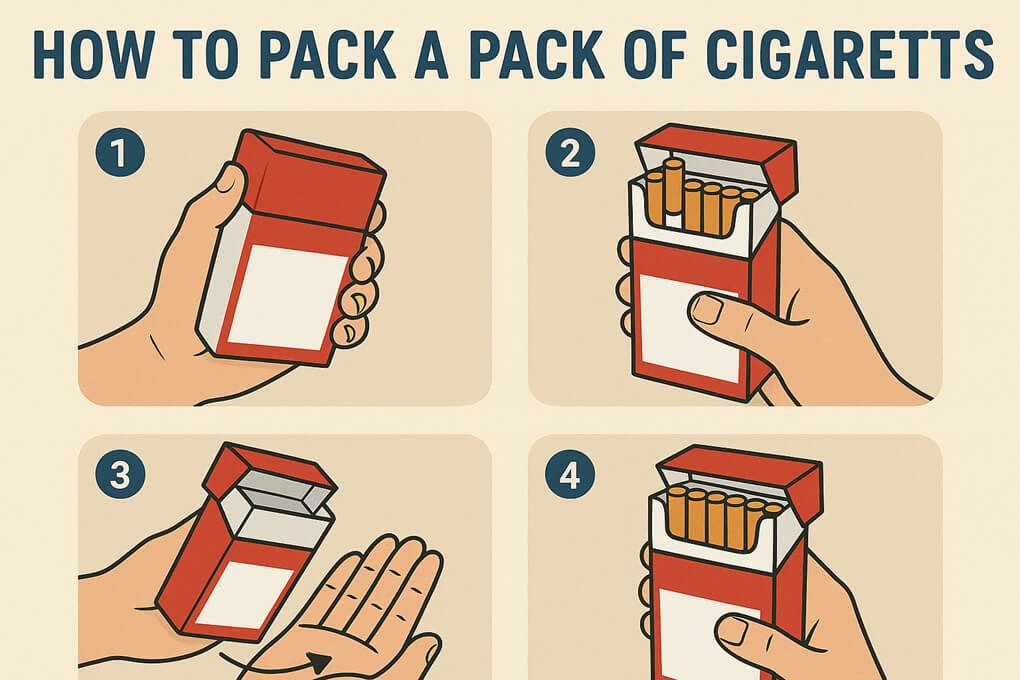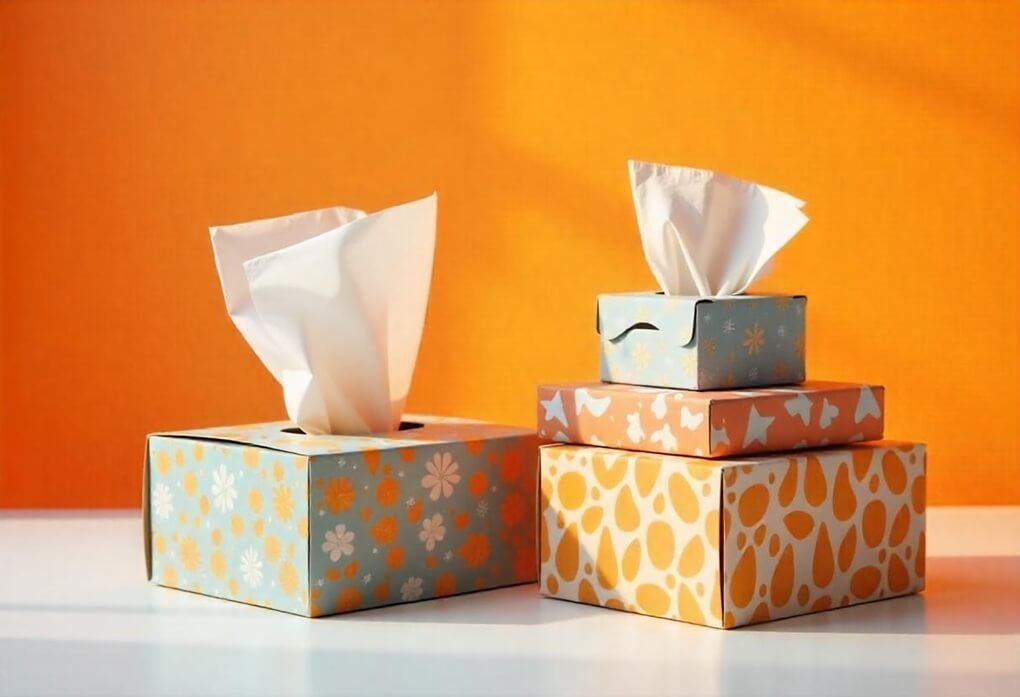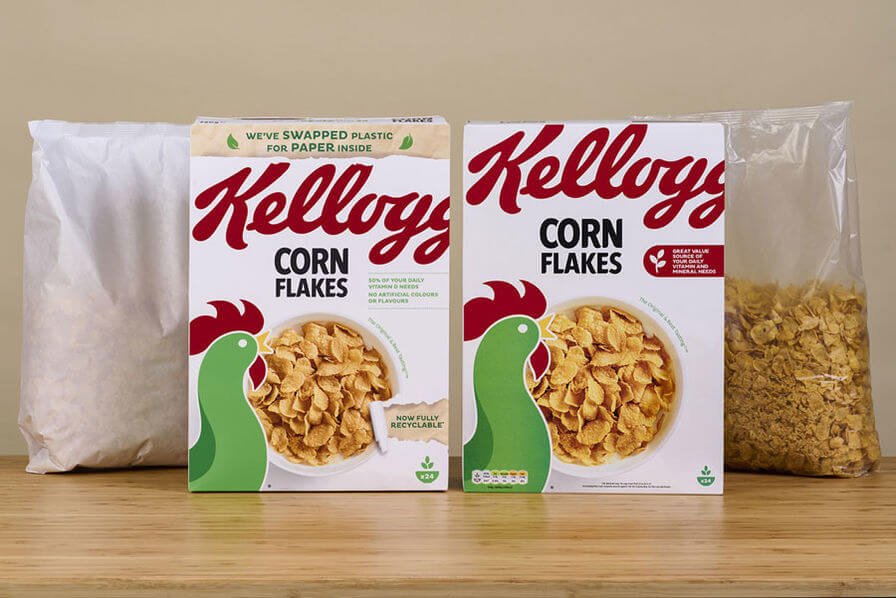Packaging comes in three main types: primary, secondary, and tertiary. Each type of packaging serves a different purpose in protecting and presenting products.
Understanding the various types of packaging is important for businesses and consumers alike. Knowing the right type of packaging can help keep products safe and make them look great on store shelves.
So, if you want to know everything about packaging types then this article is specially crafted for you. Let’s begin.
What Is Packaging?
Packaging is how products are wrapped or contained to keep them safe and ready for sale. It can be made from different materials like plastic, glass, or cardboard. The main types of packaging are primary, secondary, and tertiary.
Primary packaging is the first layer that touches the product. It protects the item and helps keep it fresh.
Good packaging is important because it can attract customers and make products easier to use.
Different types of packaging can help businesses show off their products and keep them safe during shipping.
How Many Types Of Packaging Are There?
There are three main types of packaging: primary, secondary, and tertiary. Each type has its own role in protecting products and making them easy to transport.
Primary packaging is the first layer that holds the product itself, while secondary packaging groups multiple primary packages together. Tertiary packaging is used for shipping and storing large quantities of products.
Understanding the different types of packaging helps businesses choose the best way to keep their products safe and appealing.
For example, primary packaging can include bottles or cans, while secondary packaging can involve boxes that hold several items together.
Why Do You Need To Know All About Various Types of Packaging?
Knowing about various types of packaging is important for everyone, especially businesses. Different types of packaging help protect products and keep them safe during shipping.
For example, primary packaging is the first layer that touches the product, while secondary packaging groups items together for easier handling.
Understanding these types of packaging can help you choose the best option for your needs. This knowledge can also improve how products look on store shelves and attract more customers.
By using the right type of package, businesses can ensure their products arrive safely and in great condition.
What Is Primary Packaging?
Primary packaging is the first layer of packaging that comes into direct contact with a product. It serves to protect, contain, and preserve the item inside.
This type of packaging is essential because it not only keeps the product safe but also provides important information to consumers, like ingredients and usage instructions.
Good primary packaging helps make products appealing and user-friendly, ensuring they stand out on store shelves.
Examples of primary packaging include glass bottles, plastic wrappers, and metal cans. Each of these types plays a crucial role in keeping products fresh and safe until they reach the customer.
Primary Packaging Examples
Primary packaging comes in many forms, each designed to protect different types of products.
For instance, glass bottles are commonly used for beverages because they keep drinks fresh and allow consumers to see the product inside.
Plastic wrappers are often used for snacks, keeping them safe from air and moisture while providing a convenient way to open them.
Blister packs are popular for pharmaceuticals, as they protect pills from damage and contamination.
Other examples include metal cans for food items and cardboard cartons for liquids. Each type of primary packaging is chosen based on its ability to safeguard the product while appealing to customers.
What Is the Importance of Primary Packaging?
Primary packaging is very important because it protects products from damage, contamination, and spoilage. It keeps food fresh and safe for consumption, which is especially vital for perishable items like fruits and vegetables.
Additionally, primary packaging provides essential information to consumers through labels that display ingredients, usage instructions, and safety warnings. This helps customers make informed choices when buying products.
Moreover, primary packaging plays a key role in brand identity. A well-designed package can attract customers and make a product more appealing on store shelves.
By using unique shapes, colors, and materials, businesses can differentiate their products from competitors.
Overall, understanding the importance of primary packaging helps businesses ensure their products are safe, appealing, and easy to use for consumers.
Primary Packaging Material Considerations
When choosing materials for primary packaging, several important factors must be considered. The right materials help protect products, ensure safety, and keep them fresh.
Each type of product may require different packaging materials to meet its specific needs.
For example, food items often need materials that are safe and can prevent spoilage, while cosmetics might require attractive packaging that reflects the brand.
Understanding these considerations helps businesses select the best primary packaging to keep their products safe and appealing to customers.
Product Compatibility
Product compatibility is crucial when selecting primary packaging materials. Each product has unique characteristics that determine the best type of packaging to use.
For example, liquids like juices require leak-proof containers, while solid items like snacks can be packaged in bags or boxes.
Choosing materials that match the product ensures it stays fresh and safe for consumers. If a packaging material reacts with the product, it can spoil or change the taste.
Therefore, businesses must test different materials to find the best fit for their products, ensuring quality and safety.
Protection and Preservation
Protection and preservation are key roles of primary packaging. Good packaging keeps products safe from damage during shipping and handling.
For instance, bubble wrap or foam inserts can protect fragile items like glass bottles during transport.
Additionally, packaging helps preserve the product’s freshness by keeping out air, moisture, and light.
This is especially important for food items that can spoil quickly. By using strong and effective materials, businesses can ensure their products reach customers in perfect condition while maintaining their quality over time.
Regulatory Compliance
Regulatory compliance is an important factor in primary packaging. Many products, especially food and medicines, must meet specific safety standards set by government agencies.
For example, food packaging must be made from materials that are safe for contact with food and must include labels with ingredient information.
Companies need to understand these regulations to avoid legal issues and ensure customer safety.
By following these rules, businesses show they care about their customers and are committed to providing safe products.
Sustainability
Sustainability is becoming increasingly important in primary packaging choices. Many consumers prefer products that use eco-friendly materials.
This means companies should consider using recyclable or biodegradable packaging options. Using sustainable materials not only helps the environment but also attracts customers who care about reducing waste.
Businesses can also highlight their commitment to sustainability on their packaging to appeal to eco-conscious shoppers.
By making thoughtful choices about materials, companies can contribute to a healthier planet while still providing effective primary packaging.
Barrier Properties
Barrier properties refer to how well a packaging material protects a product from outside elements like air, moisture, and light. Different products require different levels of protection based on their sensitivity.
For example, vacuum-sealed bags are great for keeping food fresh by blocking air that causes spoilage.
Similarly, opaque containers can protect light-sensitive items like certain medications or cosmetics from degrading over time.
Understanding barrier properties helps businesses choose the right primary packaging that maintains product quality and extends shelf life.
User Convenience
User convenience is an essential consideration in primary packaging design. Packaging should be easy for consumers to open and use without causing frustration.
For example, easy-tear pouches or resealable bags make it simple for customers to access snacks without needing scissors or tools.
Additionally, clear labeling helps users understand how to use the product properly.
When packaging is convenient, it enhances the overall customer experience and encourages repeat purchases. Businesses should focus on creating user-friendly designs that make their products more appealing.
Cost-Effectiveness
Cost-effectiveness is an important factor when choosing primary packaging materials. Businesses need to find a balance between quality and price to stay competitive in the market.
While high-quality materials may cost more upfront, they can save money in the long run by reducing damage during shipping or extending shelf life. Companies should also consider bulk purchasing options to lower costs further.
By analyzing their budget and needs carefully, businesses can select primary packaging that meets both quality standards and financial goals.
Brand Presentation
Brand presentation plays a significant role in attracting customers through primary packaging design.
Packaging is often the first thing consumers see when shopping, so it needs to stand out on store shelves.
Using unique shapes, colors, and logos helps create a memorable impression of the brand.
For example, eye-catching graphics can communicate a brand’s values or target audience effectively.
Well-designed primary packaging not only protects the product but also builds brand identity and loyalty among consumers who recognize and trust it.
Tamper Evidence
Tamper evidence is crucial for ensuring consumer safety in primary packaging. Customers want to know that products have not been opened or altered before purchase.
Packaging with tamper-evident features—like seals or shrink bands—helps provide this assurance.
For instance, if a bottle has a seal that breaks when opened, customers can feel confident that it is safe to use.
By incorporating tamper-evident designs into primary packaging, businesses show they prioritize customer safety and build trust with their audience.
Tamper evidence is important for keeping products safe. To learn more about how it works, check out our blog on what Is tamper evident packaging.
Shelf Life Extension
Shelf life extension is an important benefit of effective primary packaging. The right materials can help keep products fresh for longer periods by protecting them from air, moisture, and light exposure.
For example, vacuum-sealed bags remove air from around food items to slow down spoilage processes like oxidation. This means customers can enjoy products at their best quality even after weeks or months on store shelves.
By focusing on shelf life extension through proper primary packaging choices, businesses can reduce waste while satisfying customer needs for fresh products.
What Is Secondary Packaging?
Secondary packaging is the second layer of packaging that surrounds primary packaging. It does not come into direct contact with the product but serves important functions.
This type of packaging helps organize products and makes it easier to transport them. It also provides extra protection during shipping and storage.
For example, when you buy a box of cereal, the cardboard box holding multiple bags of cereal is considered secondary packaging.
This layer is essential for retailers because it helps display products on shelves and makes them easier to handle.
Understanding secondary packaging is important for businesses to ensure their products are safe and appealing to customers.
Secondary Packaging Examples
There are many different examples of secondary packaging used across various industries. Cardboard boxes are one of the most common types, often used to hold multiple items together, like a case of soda cans or boxes of cereal.
Shrink wrap is another popular option; it tightly covers products to keep them secure during shipping.
Plastic trays can also be used to hold items like cosmetics or food containers in place.
Other examples include paperboard cartons and bubble mailers, which protect products while making them easy to transport.
Each type of secondary packaging plays a vital role in keeping products organized and safe.
Functions of Secondary Packaging
Secondary packaging serves several important functions that help businesses and consumers alike.
One key function is organization; it groups multiple primary packages together, making it easier for retailers to display products on shelves.
This helps customers find what they need quickly. Another function is protection; secondary packaging adds an extra layer that keeps primary packages safe from damage during shipping and handling.
Additionally, secondary packaging often includes branding and marketing information, allowing companies to communicate their message effectively.
By using well-designed secondary packaging, businesses can enhance the shopping experience for customers while ensuring their products arrive in great condition.
Secondary Packaging Solutions
Businesses have various solutions when it comes to secondary packaging. One effective option is folding cartons, which are lightweight and easy to store.
They can be printed with colorful designs that attract customers’ attention on store shelves.
Another solution is using plastic containers that can securely hold multiple items together while being durable enough for shipping.
Additionally, trays made from sturdy materials provide excellent support for products like cosmetics or electronics during transport.
Companies can also consider using biodegradable materials for their secondary packaging to appeal to eco-conscious consumers.
By choosing the right secondary packaging solutions, businesses can improve efficiency and enhance their brand image while protecting their products.
What Is Tertiary Packaging?
Tertiary packaging is the outer layer of packaging that holds multiple secondary packages together.
It is mainly used for shipping and transporting products safely from one location to another. This type of packaging ensures that products arrive at their destination without damage.
Tertiary packaging is often made from strong materials like cardboard, plastic, or wood.
Examples include pallets, shipping containers, and crates.
While consumers usually do not see this packaging, it plays a vital role in the supply chain by making it easier to handle and transport large quantities of goods efficiently.
Understanding tertiary packaging types helps businesses optimize logistics.
Tertiary Packaging Examples
There are several examples of tertiary packaging that help in transporting products safely. Pallets are commonly used to stack and move multiple boxes or containers at once, making it easier to load and unload goods.
Shipping containers are large metal boxes used for transporting goods over long distances, especially by ships or trains.
Crates are another example; they can be made from wood or plastic and are used to protect fragile items during transport.
Stretch wrap is often used to secure items on pallets, ensuring they stay in place during shipping.
Each of these examples plays an important role in keeping products safe and organized during transportation, showcasing different types of packaging solutions.
Functions of Tertiary Packaging
Tertiary packaging serves several important functions in the shipping process. One key function is protection; it keeps secondary packages safe from damage during transport.
This is especially important for fragile items that could break easily. Another function is efficiency; by grouping multiple secondary packages together, tertiary packaging makes it easier to handle large quantities of products at once.
This helps save time and labor costs during loading and unloading. Additionally, tertiary packaging often helps with organization, ensuring that products are stored correctly in warehouses and transported smoothly to their final destinations while optimizing logistics operations.
Tertiary Packaging Best Practices for Efficiency
To ensure efficient use of tertiary packaging, businesses should follow some best practices. First, using the right-sized packaging is crucial; it should fit the products without wasting space or materials.
Weight considerations are also important; lighter materials can reduce shipping costs while still providing protection.
Additionally, companies should consider using eco-friendly materials, such as recycled cardboard or biodegradable films, to minimize their environmental impact.
Finally, ensuring that tertiary packaging is easy to assemble and secure can save time and improve overall efficiency in the shipping process.
By implementing these best practices, businesses can optimize their logistics and protect their products effectively while enhancing their brand presentation.
Factors To Consider The Best Product Packaging Type
When selecting the best product packaging type, several important factors come into play.
These factors can affect how well a product is received by customers and how efficiently it moves through the supply chain.
Key considerations include the point of sale and receiving points, product characteristics, sustainability, and storage and fulfillment processes.
Understanding these factors helps businesses choose packaging that not only protects their products but also enhances customer experience.
The right packaging can improve sales, reduce costs, and promote a brand’s image while ensuring that products are delivered safely and efficiently.
Point of Sale & Receiving Point
The point of sale (POS) and receiving point are crucial when considering packaging. At the POS, packaging must attract customers and encourage them to buy the product.
Eye-catching designs and clear labels can make a big difference in attracting attention.
For example, colorful boxes or unique shapes can stand out on shelves. At the receiving point, packaging needs to be easy to handle for store staff. It should allow for quick unpacking and restocking.
If the packaging is difficult to open or heavy, it can slow down operations. Therefore, businesses should design their packaging with both the customer’s shopping experience and the retailer’s needs in mind.
Product Characteristics
Product characteristics play a significant role in determining the best packaging type. Different products have unique needs based on their size, shape, weight, and sensitivity.
For example, fragile items like glass bottles require sturdy packaging to prevent breakage during transport.
On the other hand, perishable goods such as fruits and vegetables need breathable materials that maintain freshness while allowing air circulation.
Understanding these characteristics helps businesses choose appropriate materials that protect products effectively.
Additionally, packaging should match the product’s intended use; for instance, resealable bags are great for snacks that customers may want to save for later.
Sustainability
Sustainability is an increasingly important factor in choosing packaging types. Many consumers prefer brands that use eco-friendly materials that reduce waste and environmental impact.
Biodegradable options like plant-based plastics or recycled paper can appeal to environmentally conscious shoppers.
Companies should also consider their entire supply chain when selecting sustainable packaging; this includes how materials are sourced, produced, and disposed of after use.
By adopting sustainable practices in their packaging choices, businesses can enhance their brand reputation while contributing to a healthier planet.
This commitment to sustainability can also lead to cost savings in production and shipping over time.
Storage & Fulfillment Processes
Storage and fulfillment processes are essential factors in selecting the best packaging type for products. Efficient storage helps minimize space and costs in warehouses.
Packaging should be designed to stack easily without causing damage to the products inside. Compact designs save space and make it easier to manage inventory.
Additionally, packaging must facilitate smooth fulfillment processes by being easy to open and repackage if necessary.
This ensures quick order processing and delivery to customers.
By considering these storage and fulfillment aspects when designing packaging, businesses can improve their overall efficiency while ensuring that products reach customers in excellent condition.
Among Different Packaging Types: Which One Is Best For You?
Among the different packaging types, selecting the best one for your product depends on several key factors. First, consider the product characteristics.
Fragile items may need sturdy packaging, while food products require materials that keep them fresh. For example, using vacuum-sealed bags can help preserve perishable goods longer.
Next, think about the point of sale. Attractive packaging can catch a customer’s eye and encourage purchases.
Bright colors and clear labels are essential for products displayed in stores. Additionally, consider sustainability; many consumers prefer eco-friendly packaging options that reduce waste and environmental impact. Using recyclable materials can enhance your brand image.
Lastly, evaluate your storage and fulfillment processes. Efficient packaging helps save space in warehouses and makes it easier to transport products.
Using the right-sized boxes or containers can minimize shipping costs and improve handling.
By carefully considering these factors, you can choose the best packaging type that protects your product while appealing to customers and supporting your business goals.
Where To Get Custom Packaging For Your Products?
When looking for custom packaging for your products, there are several great options available. One excellent choice is 7 Custom Boxes, which specializes in creating unique packaging tailored to your needs. We offer a variety of styles, including boxes for food, cosmetics, and gifts. Our team can help you design packaging that showcases your brand and meets your specific requirements.
When looking for custom packaging for your products, it’s important to choose a reliable manufacturer that meets your needs. You can find helpful tips on selecting the right custom packaging company in our blog post, choosing the right custom packaging manufacturer, which provides insights on what to consider before making a decision.
Final Verdict On Types Of Packaging
Selecting the right packaging type for your products is essential for protecting them and enhancing your brand image.
Understanding the differences between primary, secondary, and tertiary packaging can help you make informed decisions. Custom packaging solutions, like those offered by 7 Custom Boxes, allow you to create unique designs that stand out on store shelves.
Additionally, considering factors such as sustainability and product characteristics can lead to better choices that appeal to eco-conscious consumers.
Whether you need sturdy boxes for shipping or attractive packaging for retail, the right packaging can make a significant difference in customer satisfaction and sales.
By investing in quality packaging, you not only protect your products but also create a memorable experience for your customers.

